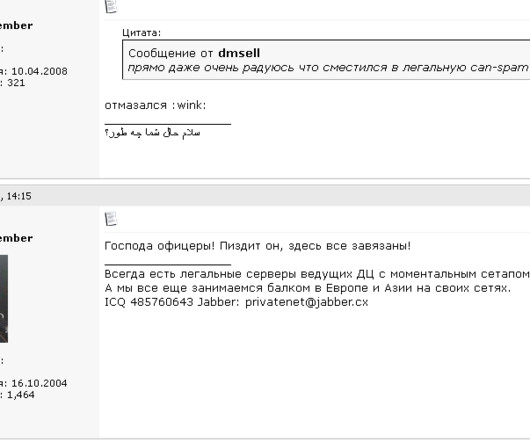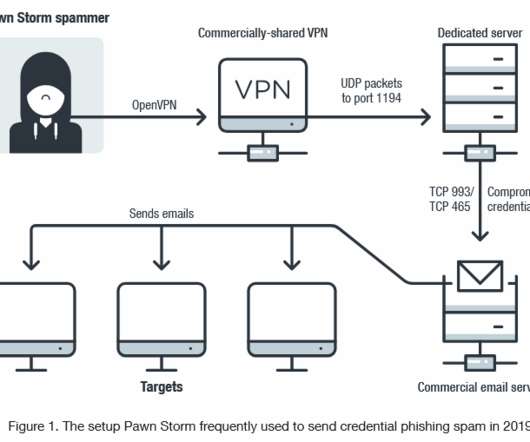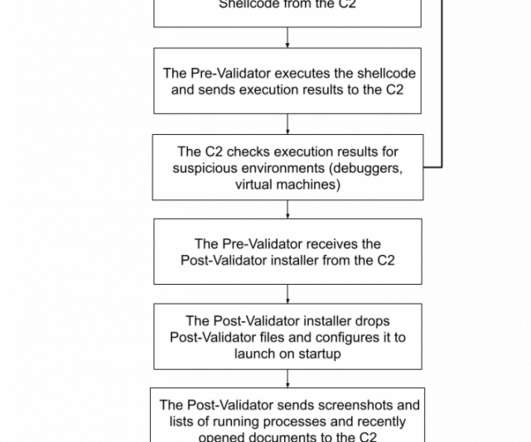Meet Ika & Sal: The Bulletproof Hosting Duo from Hell
Krebs on Security
JANUARY 8, 2024
As detailed in my 2014 book, Spam Nation , Spamdot was home to crooks controlling some of the world’s nastiest botnets, global malware contagions that went by exotic names like Rustock , Cutwail , Mega-D , Festi , Waledac , and Grum. And there were many good reasons to support this conclusion. w s, icamis[.]ru ru , and icamis[.]biz.












Let's personalize your content